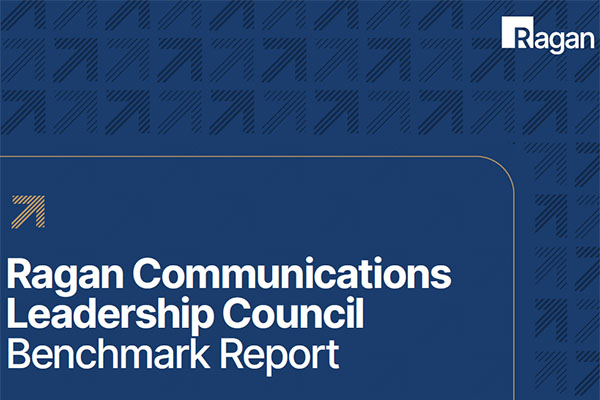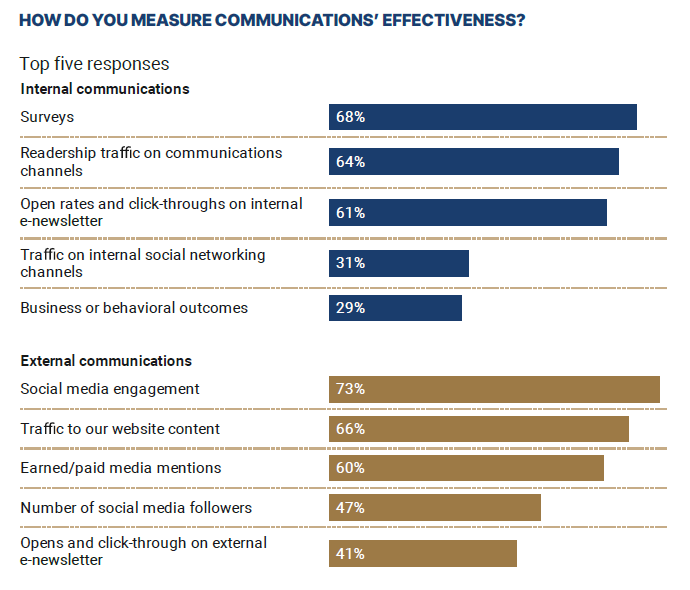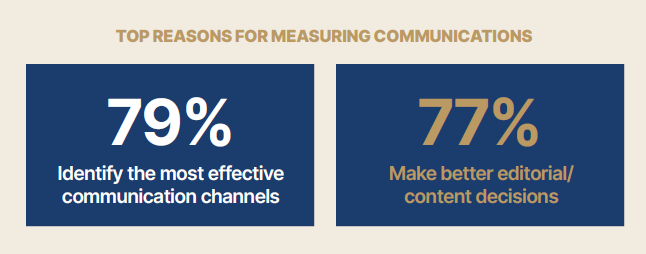Ragan Research: Comms measurement outputs and use cases
What outputs are communicators getting from measuring this work, and how are they applying the findings?

Insights from the 2024 Ragan Communications Benchmark Report, an exclusive research project for Ragan’s Communications Leadership Council, show how communicators are measuring the effectiveness of their efforts. But what outputs are they getting from measuring this work, and how are they applying the findings?
Outputs and metrics vary depending on function
Among communicators who say they measure effectiveness, more than half say they do so either monthly (33%) or quarterly (26%), with around one in five (21%) measuring at least weekly. Only 7% say they measure annually, and 15% do so on an ad-hoc basis.
Communicators employ a broad range of tools for these measurements depending on whether they are measuring internal or external communications. While many measurement tools provide some form of analytics, few provide the data communications professionals need. New technologies in particular, including digital platforms, generative AI tools and digital workplace portals, are often perceived as challenging to meaningfully interpret, according to Ragan’s 2023 CommTech report.

A closer look at outputs reveals that surveys remain the most popular method for measuring internal communications’ effectiveness, with two-thirds (68%) of respondents selecting them. These are followed by readership traffic on communications channels (64%) and open rates or click-throughs on internal e-newsletters (61%).
Meanwhile, alongside web traffic (66%) and earned/paid media mentions (60%), metrics from social media platforms — which are inexpensive to deploy and reach a wide audience—remain critical to measuring external communications’ effectiveness. However, measuring their true impact can be challenging, particularly when navigating ever-changing and less-than-transparent social media algorithms. While they still rank among the most popular methods for external communications, measuring social media engagement is down 4 percentage points from 2023 to 73%, and number of social media followers is down 17 percentage points to 47%.
These decreases may represent temporary shifts triggered by the current context, such as economic uncertainties or the rise of new platforms, or they could signal longer-term changes in measurement practices. Amid a changing digital landscape, organizations may increasingly re-evaluate effective metrics, with a slow transition in emphasis from quantity to quality – particularly when it comes to social media measurement.
Using the results
What do communicators see as the purpose of these efforts?

Respondents are most likely to say they use the results of these measurements to identify effective communication channels (79%) and make better editorial decisions (77%). Internal communicators are also more likely to say they also use measurements to provide employees with more relevant information (50%), while external communicators say they use them to benchmark performance against best practices (52%).
Overcoming ‘analysis paralysis’
As was the case with last year’s results, communicators cited a lack of time (58%) and a lack of proper technology (54%) as their top measurement challenges. While a similar percentage of respondents cited lack of time in 2023, this will hopefully decrease as AI streamlines and expedites the technical, time-intensive rigamarole of data collection.

Rounding out the bottom of these measurement challenges is analysis paralysis (21%)—feeling overwhelmed by the abundance of options and struggling to take action—and perceptions of a lack of leadership support (12%), suggesting that communicators largely feel aligned with senior leadership on measurement objectives.
Communications audits are a useful method to overcome some of these challenges. The purpose of an internal communications audit is to evaluate the effectiveness of communication processes and channels within an organization, with the ultimate aim of enhancing employee engagement, alignment with organizational goals and overall organizational effectiveness.
Ultimately, these audits can also help establish a benchmark that will allow you to craft a narrative of communications successes that is rooted in data and framed in the larger story of business growth.
The full 66-page report, based on a survey of 1,000 communicators worldwide, is available exclusively to members of the Ragan Communications Leadership Council.






